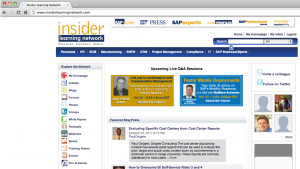In my presentation “A comprehensive guide to delegation in SAP Manager Self-Service (SAP MSS)” at the HR 2008 event in Orlando, Florida, I shared best practices for designing a thorough delegation process in SAP HCM that satisfies key delegation business requirements. The solution also ensures audit requirements are met including Sarbanes-Oxley.
Why use delegation within your MSS platform?
In many organizations today, managers require a delegate (or proxy) to be authorized to act on their behalf. Managers may need a delegate when he or she:
- Goes on vacation and needs coverage
- Requires ongoing administrative assistance
- Requests assistance from a peer
Most commonly, delegation is used when initiating and approving Personnel Change Requests (PCRs), and for approving leave requests, travel requests, and time and expenses. Performance Management and Compensation Management are sometimes subject to delegation but can be problematic due to the sensitivity of data available in those processes. Delegation is usually distinguished between transactional and approval authority. Some managers want the delegate to have the ability to:
- View employee information only
- View employee information and initiate transactions, but not approve workflow items
- View employee information, initiate transactions, and approve workflow items
Depending on your policy, you can design a delegation process that grants delegation to managers only, to all employees, or to those employees who meet certain criteria, such as those with a certain salary grade and above. Regardless of how and to whom you choose to grant delegation, there are certain best practices you should keep in mind.
Four tips for designing a robust delegation process
- Ensure that delegation privileges have a set “life span”: You should specify beginning and end dates for your delegation relationships to ensure that your data does not become stale. Do not leave the delegation relationship open-ended by specifying an end date of 12/31/9999. Instead, institute and enforce a corporate policy of creating specific life spans. For example, you may want to set the maximum time period allowed for delegation to six months.
- Distinguish between transactional and approval authority: The difference between transactional and approval authority is an important distinction within a delegation context. Distinguishing between merely giving authority to initiate transactions (transactional authority) and actually giving authority to approve work items (approval authority) gives you greater flexibility and provides a more precise segregation of duties. Your auditors will love this.
- Review the delegation policy and functionality with your legal and IT security teams: Because delegation is not standard SAP functionality, make sure that the appropriate contacts in your company are aware of the new functionality you are planning to implement so that they can apprise you of any legal or security issues/policies that you need to adhere to.
- Create a custom audit program to report on delegation practices:An audit program that reports on your managers’ and delegates’ practices of delegation can help you detect whether there is some suspicious activity that you need to follow up on and whether any managerial activity exists that may be frowned upon. Understanding how managers and proxies are using the functionality will also shed light on how to improve the functionality in future releases.
Facing the challenges of implementing delegation in SAP
Implementing delegation in SAP can be challenging. However, by following these four recommended best practices, you will position yourself to properly address delegation and its impacts to the organization. A flexible and robust delegation solution will go a long way in broadening your SAP HCM footprint and increasing your ROI.
